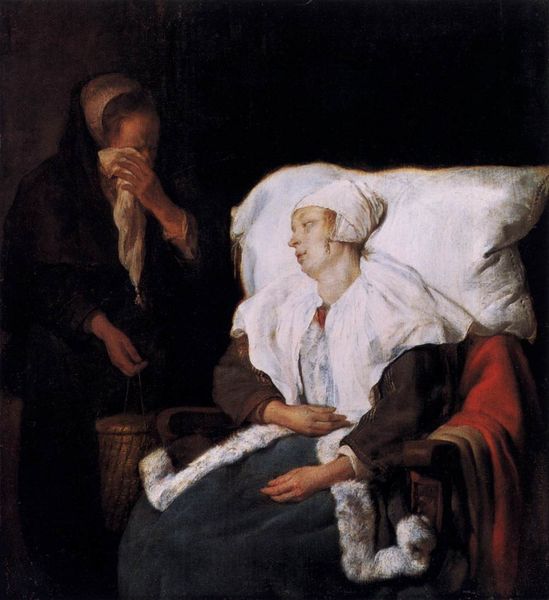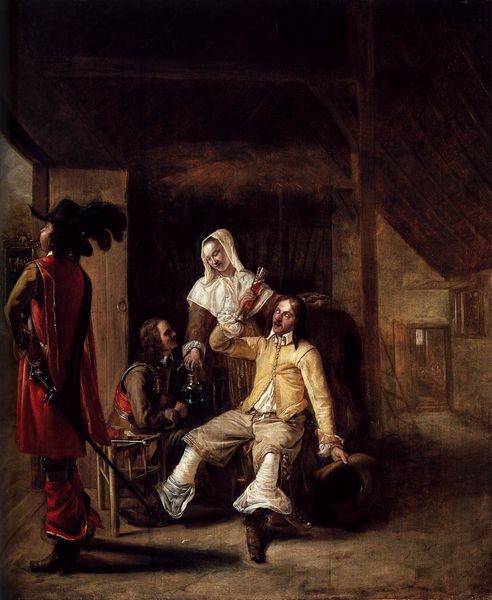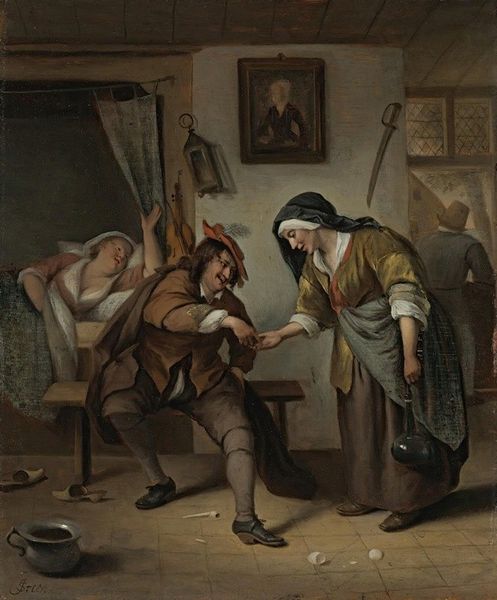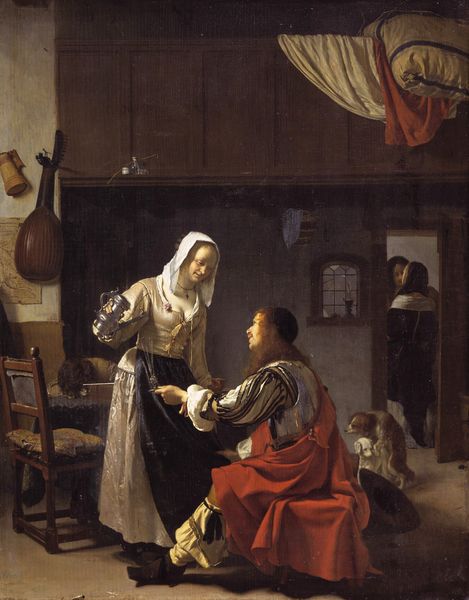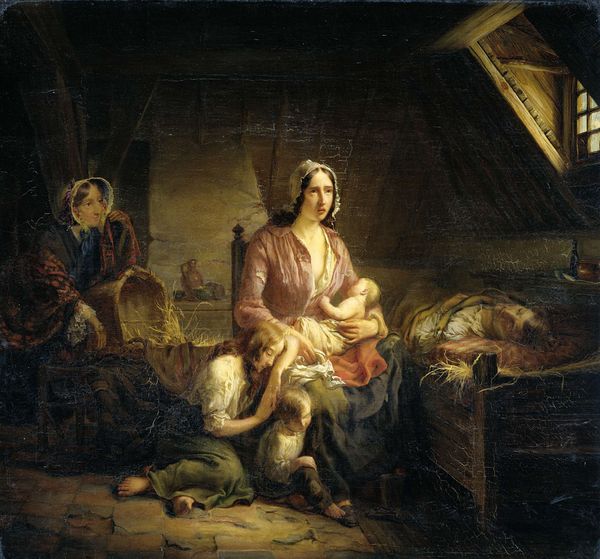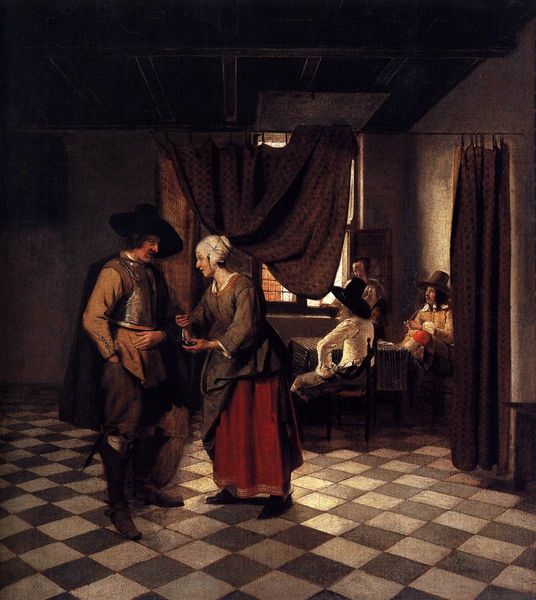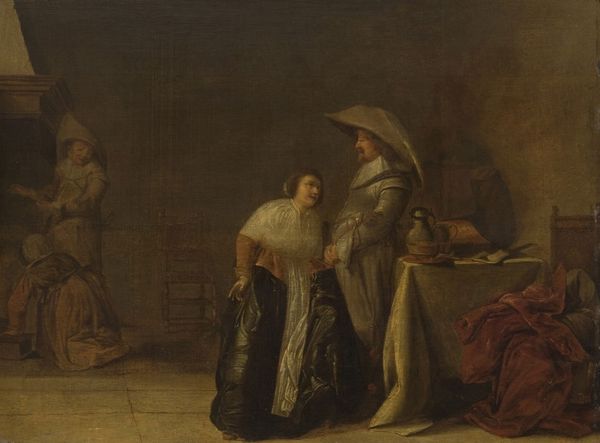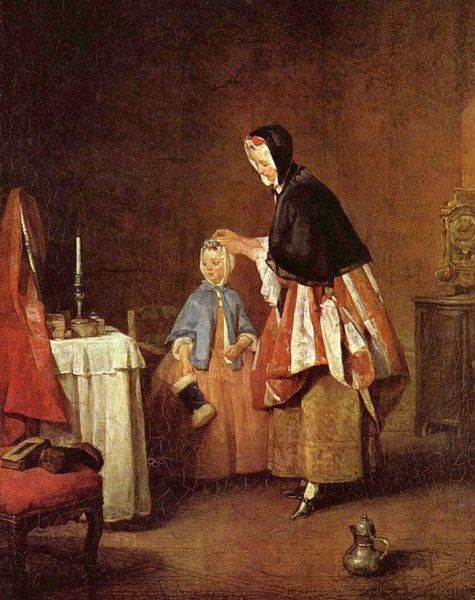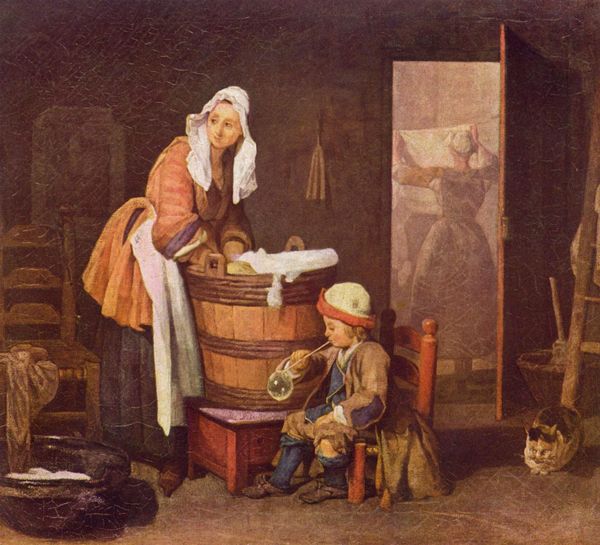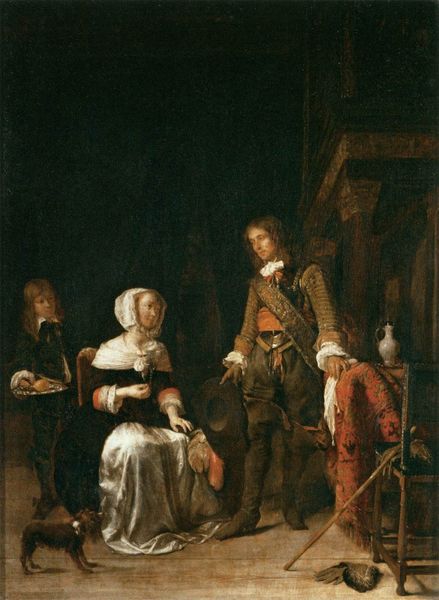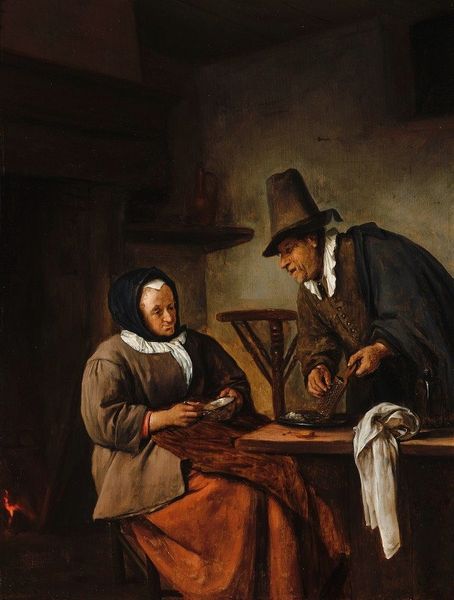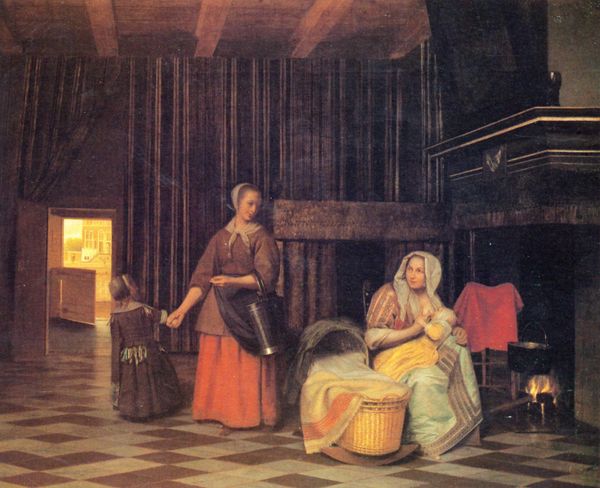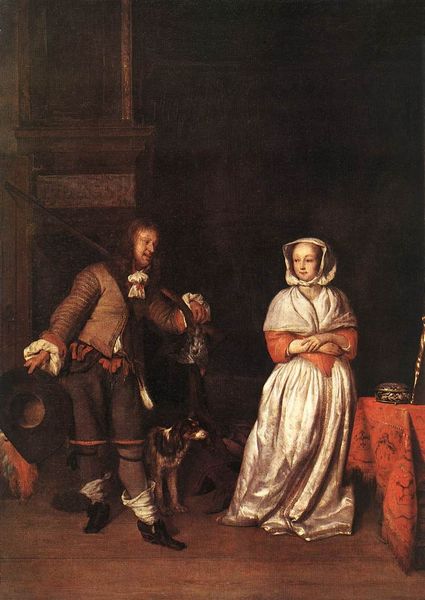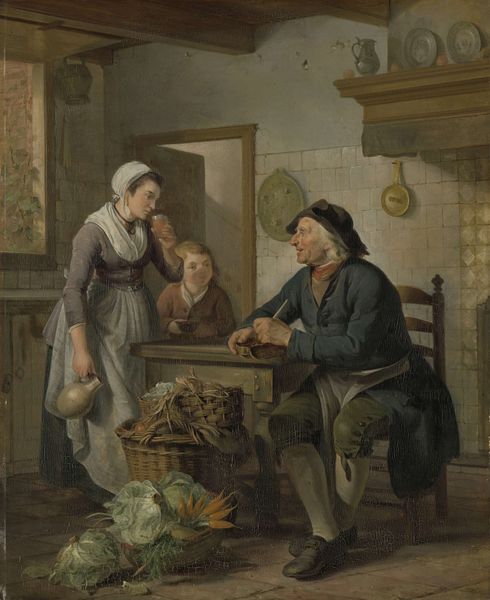
Tavern scene with maid trying to fill the glass of a cavalier (The Empty Glass) 1652
0:00
0:00
oil-paint
#
portrait
#
narrative-art
#
dutch-golden-age
#
oil-paint
#
oil painting
#
genre-painting
Dimensions: 46 x 37 cm
Copyright: Public domain
Curator: Let's consider this piece by Pieter de Hooch, painted around 1652. It's known as "Tavern scene with maid trying to fill the glass of a cavalier," but more succinctly as "The Empty Glass," and it's currently housed at the Museum Boijmans van Beuningen in Rotterdam. De Hooch, of course, worked primarily in oil paint. Editor: Ah, immediately, there’s a dusky charm here. A world weary feeling amidst the tavern clamor, and she the eye of the storm. Don't you think so? Curator: I find it fascinating how de Hooch orchestrates the composition around the central action: the serving maid and the cavalier. His material concerns—the textiles, the gleam of pewter, the wear on that humble wooden chair—all work together to construct a vision of Dutch daily life that both idealizes and critiques. The light itself almost feels… structured, ordered. Editor: Yes, a moment perfectly posed but pretending to be a snippet of real life, if that makes sense? A story about longing perhaps? Maybe not even the cavaliar. But hers. Her resignation feels potent, if it may, stuck in tavern twilight forever. Curator: Resignation and duty are right. We can delve into the social status imbued in labor, as you sensed. De Hooch wasn’t merely interested in surface appearances but in documenting the societal dynamics that shape such scenes. This painting acts almost as a form of historical record of 17th-century Dutch life, considering it from the lens of everyday exchange and economic activity within this tavern. Editor: So we can read this not just as pretty, golden-age interior, but about, like, labor practices. Okay. And, just to throw a rogue idea in there, don't you feel there's something in her hooded look, like a Madonna figure? In the lowliest environment imaginable? It might be wishful thinking on my part… Curator: The comparison to a Madonna is compelling in light of our understanding of labor hierarchy, actually. What’s visible is the finished artwork, seemingly accessible, while de Hooch also calls to attention a complex and demanding world in his material construction of paint. Editor: Right. Even though it seems still somehow frozen outside history too. Always a balancing act, to enjoy it and respect the social dynamics playing underneath. Curator: It's those layered perspectives which truly capture and convey this scene’s enduring appeal.
Comments
No comments
Be the first to comment and join the conversation on the ultimate creative platform.
